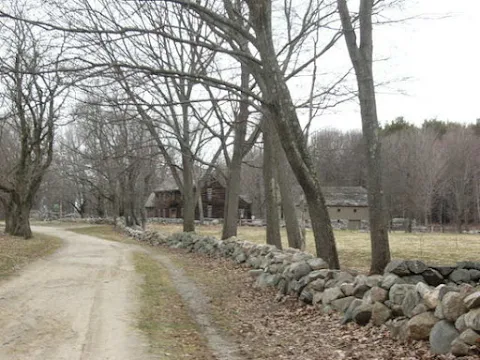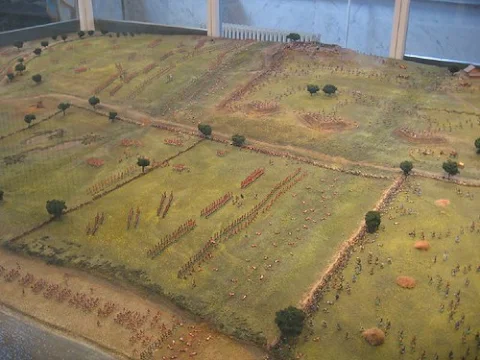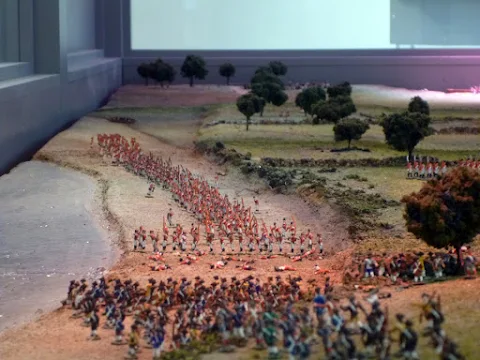I discovered The Courier magazine in the early 1970's at my local hobby store, Bowens Toys and Hobbies in Bedford Massachusetts. Bowens was a wonderful place. My parents went to the local grocery store and dropped me off there to stay out of trouble. Here were wonderful delights to amuse and entertain me. Shelves of exciting looking Avalon Hill games. They promised you could recreate history by refighting historic battles. Then there were shelves and shelves of plastic model kits; Tanks, ships and planes. And boxes of Airfix plastic soldiers from all time periods.
But best of all I found my first copy of a self published newsletter from a group led by Dick Bryan and the New England Wargamers Association called "The Courier." This was not the slick color publication in the 1980's but a smaller newsletter. It opened my eyes to the wonderful world of miniature war games. Sure, I had been playing board games, but here were people playing with real rules for playing toy soldiers. Great looking painted figures, on terrained table tops and lots of research to get correct uniforms and tactics. Most people were playing Napoleonics, especially a game called Column, Line and Square. The author of the rules Fred Vietmeyer write the most entertaining battle reports and gave great insights in to how and why he wrote his rules and how they represented his historical research. His debates with Bob Jones, and others were a model of how to have different opinions but still be polite.
This was great stuff and I eagerly looked forward to each new issue. It was the first thing I went to each visit and I saved my pennies to buy them when they came out. I read and reread each copy and studied them untill they fell to pieces. When I got into reenacting I found a small group of friends who also war gamed with miniatures . We read and studied copies of the Courier and plotted games and figures. we played with Scruby miniatures in first 2 5mm and later in 9mm. It was a wonderful start to a life long hobby which has brought me much joy and happiness.
One of my favorite columns was by Steve Haller. He was my guru for American Rev War gaming. Now those of us who were interested in this time period were a very tiny, smallish niche within a small niche. But what he put out in each article was a treasure trove of information. Battle reports, regimental histories and uniform research. There were suggestions on how to organize your regiments for the table top and discussions like realistic objectives for our games or finding correct buildings for the era.
More importantly he backed what he wrote about with source materials. After each article I was off to the library to find these holy grains of knowledge. On weekends I would take the bus to Harvard Square and it's collection of used book stores to hunt down books. It was through these articles that I set out on earning a degree in history and eventually a thirty year career with the National Park Service at Rev War sites.
Two articles by Steve Haller always have stood out. The first was a two part article on Greene's and Cornwallis armies 1780 - 81. Here were listing of units, troop strengths and uniform information. Everything you needed to create these two historical armies. The second was a campaign formatted to re fight the Cowpens - Guilford courthouse campaign. This was outstanding. One did not worry about logistics and map movement. Instead there were a series of interconnected battles who results carried over to the next fight.
Each side started with a historical order of battles. Each month of the campaign players were given a series of options. So January 1781 as Morgan you started with his light Corp. On a die roll either Picken's or Sumner's or both militia may join you. You then had the option of either attacking Augusta, Ninety Six or fighting Cowpens. The British rolled and might reinforce the outposts you were attacking. While you had the historical order of battle you might get or lose reinforcements. Once battles happened casualties were removed and you moved to next month. Replacements and reinforcements were figured in. You had a wonderful system to set up possible battles and firefight the campaign. Simple but neat and very playable. I have fought this campaign out and enjoyed it very much. Of course you can read about it here in the blogs archives.
Lastly, a word of thanks. To Dick Bryant for his wonderful publication which started me in this hobby. To the members of NEWA who put the publication together, contributed many articles and created a folklore and history to this hobby that I still am thrilled to hear and learn about. I am honoured to have met many of these people over the ages and I game with some of them to this day. Finally to Steve Haller who started me on a life long fascination with (and thirty year career working in) the time period. Thank you both.












































